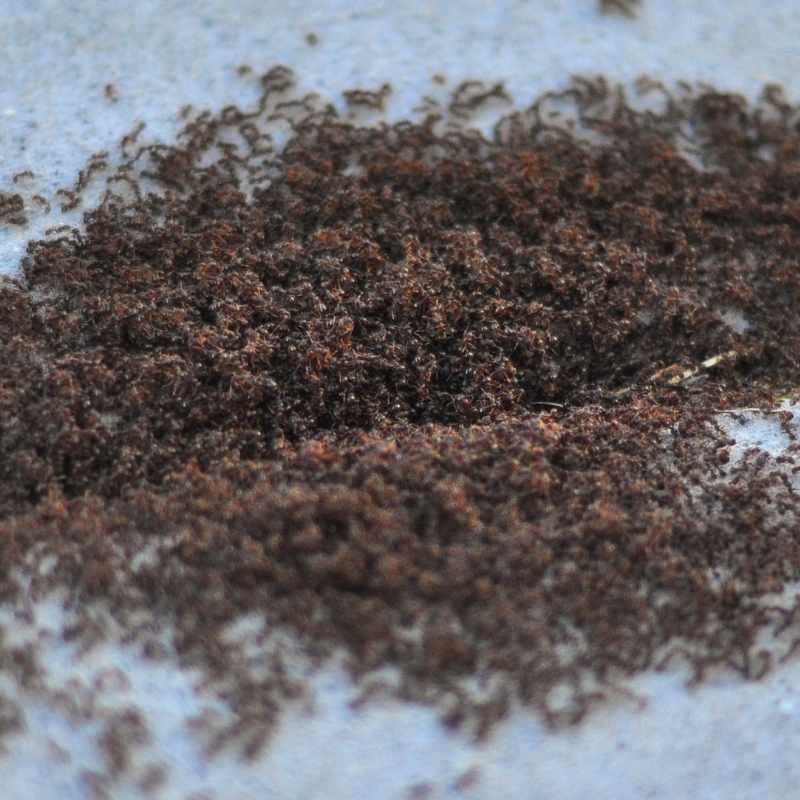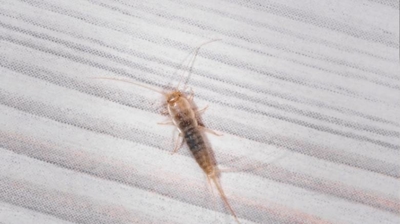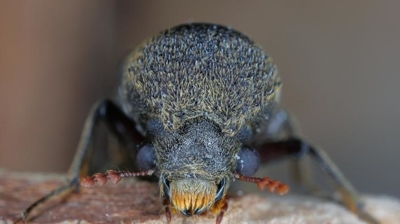
Pavement Ant Control Services

Pavement Ants
While pavement ants (Tetramorium caespitum) are not inherently dangerous in the way that venomous or more aggressive pests might be, these ants can still be considered harmful:
- Food Contamination: Pavement ants readily forage indoors, especially in kitchens, pantries, break rooms, and food storage areas. They are omnivorous and will consume a wide range of food, including sweets, grease and fats, proteins (meats, cheese, pet food), bread and grains. Pavement ants crawling through unsanitary areas like garbage bins, drains, or bathrooms can carry bacteria such as Salmonella or E. coli and transfer them to food or food prep surfaces. Infested food must be discarded, leading to waste and potential health code violations in commercial settings.
- Structural Nuisance and Minor Damage: Although not wood-destroying like carpenter ants or termites, pavement ants can still be destructive in subtle ways; they excavate soil from beneath concrete slabs, sidewalks, driveways, and foundations, creating small piles of displaced dirt (often mistaken for termite activity), and their tunneling can slowly lead to soil erosion under foundations, potentially contributing to cracks or settling in slabs over time—especially when colonies are large or established near moisture-prone areas.
Learn more: Do Pavement Ants Bite? || What Do Pavement Ants Eat?
Pavement Ant Removal
Pavement ants might look harmless at first, but letting them stick around—especially near homes or businesses—creates a set of problems that grow quickly if you don’t address them. Here’s why removing these ants is important:
- They invade kitchens and food storage areas: Pavement ants are highly food-driven. Once they discover a reliable food source, they leave strong pheromone trails that recruit large numbers of workers. This can lead to persistent infestations in pantries, cupboards, and break rooms, contaminating exposed food and damaging your reputation if you run a business.
- They build nests in cracks and structural gaps: Their colonies are often located under concrete slabs, along foundations, in wall voids, and beneath patios. As they expand, they can displace soil, create voids under pavers, and worsen small cracks. Over time, this contributes to settling issues around sidewalks, driveways, and building perimeters.
- They multiply fast and spread quickly: A single property can support multiple interconnected colonies. If one nest is disturbed or treated superficially, ants often split off and establish satellite colonies, making the problem harder and more expensive to control later.
- They attract other pests: Their presence encourages predators like spiders and certain beetles. Their foraging habits—especially around trash areas—can also overlap with other nuisance pests.
- DIY treatments often make the problem worse: Surface sprays kill a few visible ants but don’t reach the queens. Colonies respond by budding—creating additional queens and expanding into new areas.
Pavement ants don't just affect homes. Food service businesses, healthcare facilities, apartment complexes, and schools all face strict sanitation expectations. Ant trails, especially near food prep areas, can trigger failed inspections and customer complaints.
Learn more: How To Get Rid Of Pavement Ants
Pavement Ant Control
Hiring our professional pest control for pavement ants is a smart investment because these ants are more than just a surface nuisance. Pavement ants nest in soil under sidewalks, driveways, foundations, and building slabs, which makes them difficult for homeowners or business owners to reach with over-the-counter products. While DIY sprays may temporarily reduce visible ant activity, they rarely eliminate the colony at its source, allowing the problem to return quickly.
We bring expertise, specialized tools, and targeted treatments designed to penetrate pavement ant nesting sites. Our technicians can accurately identify the infestation, treat colonies hidden under concrete or foundations, and use methods that disrupt the entire colony rather than just the ants you see. This not only ensures more effective eradication but also reduces the likelihood of costly recurring infestations.
Additionally, pavement ants are known to contaminate food and can become a persistent issue in kitchens, pantries, and break rooms. Our professionals don’t just eliminate the current infestation—we also implement preventive measures to block future invasions, safeguarding both health and property. In the long run, hiring our experts saves time, prevents frustration, and delivers lasting results that DIY solutions simply cannot match.
Pavement Ant Exterminators
Hiring our local exterminators for a pavement ant issue offers several advantages that often lead to better results, better service, and better value:
- Local expertise with your specific conditions: Pavement ants behave differently depending on micro-climate, soil type, landscaping practices, foundation structure, and even how neighborhoods are built. Our local professionals work these conditions every day, so we quickly identify where colonies are likely nesting, how they’re moving into the structure, and which treatments are most reliable in the area.
- Faster response and more flexible scheduling: Our local team is typically more responsive because we're nearby and not bound to rigid nationwide dispatch systems. That means quicker inspections, faster follow-ups, and reduced downtime while ants continue to spread.
- More thorough inspections and personalized treatment plans: National providers often standardize their services to keep operations simple. Our local exterminators perform detailed inspections, adjust product selection and techniques based on your home’s layout, and tailor the treatment strategy rather than rely on a generic program.
- Consistency—you get the same expert each visit: With our local team, you’re more likely to see the same technician, which matters because pavement ants can require tracking satellite colonies, re-treating problem areas, and monitoring activity over time. Continuity leads to better long-term control.
- Greater accountability and stronger customer service: Our local team relies heavily on our reputation. That pressure produces clearer communication, more careful work, and more proactive follow-up.
- More strategic use of products and safer applications: Because we know the local environment so well, our pest control technicians can use targeted, minimal treatments that eliminate colonies effectively without unnecessary broad-spectrum applications. This is especially important when pavement ants are trailing near entry points, kitchens, or pet areas.
- Better long-term prevention, not just temporary relief: Pavement ants can re-establish quickly if you don’t eliminate the queen and satellite colonies. Our local technicians are familiar with seasonal patterns in the region—when swarming occurs, which areas tend to re-infest, and which exterior conditions need correction. This expertise dramatically reduces repeat issues.
Choosing our local team keeps your money within the community and helps support specialists who are genuinely invested in local property conditions, not large corporate systems.
What Do Pavement Ants Look Like?
Pavement ants (Tetramorium caespitum) have a distinct and identifiable appearance, making them relatively easy to distinguish from other common household ants. Below is a detailed description of their physical characteristics:
- Size: Workers are small, typically 1/8 inch (2.5–4 mm) long. Queens are larger, around 3/8 inch (8–10 mm) in length.
- Color: Most pavement ants are dark brown to nearly black, though they can also have lighter brown legs and antennae. Their bodies have a slightly glossy or shiny sheen, which helps in identifying them in proper lighting.
- Body Segmentation: Like all ants, their bodies are divided into three main sections: head, thorax, and abdomen, with a narrow "waist" in between.
- Head and Thorax: Both have distinct parallel grooves or fine striations—a key identifying trait.
- Antennae: Composed of 12 segments, ending in a 3-segmented club. The club helps differentiate them from other ants with unsegmented or differently segmented antennae.
- Waist: They have a 2-node petiole (a pair of small segments between the thorax and abdomen), which distinguishes them from ants with only one node, such as Argentine ants.
- Spines: Small but noticeable pair of spines project from the rear of the thorax.
- Abdomen: The gaster (rear section) is generally smooth, oval-shaped, and may appear slightly larger than the thorax.
- Hair: Sparse but visible fine hairs on the body and legs, often visible under magnification.
Winged Reproductives (Alates)
During mating season (typically spring to early summer), winged males and females emerge:
- They resemble workers but are larger.
- They have two pairs of wings, with the front pair longer than the hind pair.
- Wings are typically pale or translucent with visible veins.
Where Are Pavement Ants Found?
Pavement ants nest in various outdoor locations, particularly in urban and suburban environments. They have a preference for nesting in or around human-made structures. Here are some of the common places where pavement ants can be found nesting:
- Under Pavement: As their name suggests, pavement ants often build nests underneath sidewalks, driveways, and the cracks and crevices of concrete and asphalt surfaces. These locations provide them with protection and insulation from the elements.
- In Walls: Pavement ants may nest within the walls of buildings, especially if they find access through cracks, gaps, or openings. They can nest in wall voids, insulation, and other concealed spaces.
- Beneath Rocks: In natural environments or garden areas, pavement ants may establish nests beneath rocks, stones, or landscape features. These areas provide shelter and protection.
- Within Logs or Woodpiles: In outdoor settings, pavement ants may nest within decaying logs or woodpiles. The rotting wood provides a suitable environment for their colonies.
- Under Debris: Pavement ants can create nests under debris, fallen leaves, mulch, or organic matter on the ground. These materials help regulate temperature and humidity within their nests.
- Near Moisture Sources: Pavement ants are attracted to moisture, so they often nest near water sources like leaky pipes, drains, or areas with high humidity. This is especially common when they invade indoor spaces.
- In Soil: Occasionally, pavement ants may dig their nests directly into the soil in gardens or yards, particularly if the soil is loose and easy to excavate.
Pavement ants are adaptable and opportunistic in their choice of nesting sites. They select locations that offer protection, moisture, and proximity to food sources. Their nesting behavior can vary depending on local conditions and environmental factors.
What Do Pavement Ants Eat?
Pavement ants are opportunistic omnivores, which means they have a diverse diet and can consume a variety of foods. Their dietary preferences can vary depending on the availability of food sources in their environment. Here are the primary types of food that pavement ants typically eat:
- Sugars: Pavement ants have a sweet tooth and are attracted to sugary substances. They feed on nectar from flowers, honeydew produced by aphids and other sap-feeding insects, and sweet food scraps. This attraction to sugars often leads them to invade kitchens and pantries in search of sweets and spilled sugary items.
- Proteins: These ants also require proteins for their diet. They consume small insects, such as flies, spiders, and dead arthropods, as well as protein-rich food scraps like meat, fish, and pet food. Pavement ants actively forage for protein sources to nourish their colony and develop their brood.
- Fats and Grease: Pavement ants may seek out fatty or greasy food items, such as oily crumbs or discarded fast food. These substances can provide a source of energy and nutrition for the colony.
- Human Food: In urban and suburban areas, pavement ants are known to scavenge for human food scraps. They can infiltrate homes and picnic areas, searching for crumbs, leftovers, and spilled beverages.
- Seeds and Grains: Although less common, pavement ants may occasionally consume seeds, grains, and other plant matter. They are not strict herbivores, but they may opportunistically feed on these items if found in their foraging territory.
- Liquid Foods: Pavement ants are attracted to liquids, including water, sugary drinks, and syrups. They may forage for and consume liquid food sources.
Pavement ants are highly adaptable, and their food preferences can change with seasonal variations and the needs of their colony. Their ability to exploit various food sources contributes to their success in urban environments. To control pavement ant infestations, it's crucial to eliminate access to food and moisture sources that attract them into homes and structures.
Pavement Ant Life Cycle
The life cycle of pavement ants, like many other ant species, consists of four main stages: egg, larva, pupa, and adult. Let's explore each stage of their life cycle in more detail:
- Egg Stage: The life cycle begins when the pavement ant queen lays eggs. These eggs are typically small, white, and oval-shaped. The number of eggs laid depends on various factors, including the age and health of the queen. The queen's primary role is to reproduce and produce eggs for the colony.
- Larva Stage: Once the eggs hatch, they give rise to ant larvae. Ant larvae are legless, soft, and worm-like in appearance. During this stage, the larvae are entirely dependent on worker ants for their care. Worker ants feed the larvae by regurgitating liquid food, consisting of a mixture of saliva and pre-digested food, which provides essential nutrients for their growth.
- Pupa Stage: As the larvae grow and develop, they enter the pupal stage. In this stage, the ant larvae undergo metamorphosis, transforming into adult ants. The pupae are typically encased in a cocoon-like structure. This stage is a critical period of development when the ant's body undergoes significant changes to develop into an adult.
- Adult Stage: Once the metamorphosis is complete, the pavement ant emerges from the pupal stage as an adult ant. Adult pavement ants have a fully developed exoskeleton, six legs, antennae, and segmented bodies. They are now capable of performing various roles within the colony, such as foraging for food, caring for the young, and defending the nest. Within a pavement ant colony, there are typically three main castes of adult ants: queens, workers, and males.
- Queen: The queen is the largest ant in the colony and is responsible for egg-laying. Her primary role is to reproduce and establish new colonies. Queens can live for several years, continually laying eggs.
- Worker Ants: Worker ants are smaller than the queen and perform various tasks to support the colony. They forage for food, care for the young, construct and maintain the nest, and defend the colony against threats.
- Male Ants: Male ants are typically produced during certain times of the year for mating purposes. They have wings and are often larger than worker ants. Males leave the colony to mate with young queens, and they do not play a significant role in the ongoing activities of the colony.
The length of time it takes for pavement ants to complete their life cycle from egg to adult can vary depending on environmental factors such as temperature and food availability. In optimal conditions, it generally takes several weeks to a few months for an egg to develop into a mature adult ant.

Hear From Our Happy Customers
-
"Fantastic & Patient"
Jarvis was fantastic and patient. He answered my questions with an in-depth explanation and addressed all of my areas of concern. Would love for him to be my assigned tech going forward. Well done!
- Yonnette M. -
"Very Knowledgeable"
The tech that arrived was courteous, professional, and very knowledgeable. He was Great.
- Uerial I. -
"Wonderful Service"
Wonderful service. Jarvis is great. Took care of everything I needed. Thank you!
- Henry P. -
"Professional & Considerate"
I’m pleased with Miche services. Jarvis came today. Professional and considerate. Thank you!
- Judy B. -
"Great Communication"
Tech was on time, communication was great, and he accommodated my needs.
- Alonzo W. -
"Exceeds Expectations"
I can’t say enough positive things about this company... The tech that came out, Jarvis went above and beyond my expectations. Thank you guys, I will continue using your services.
- Jake M.



